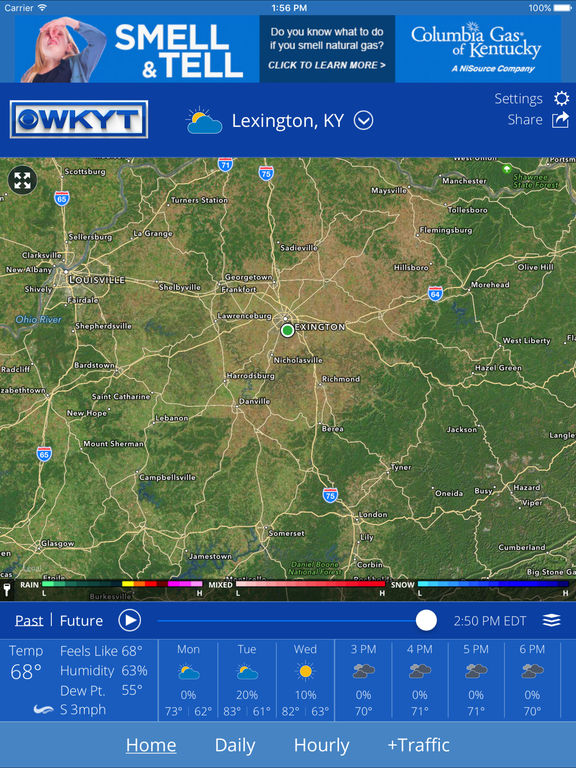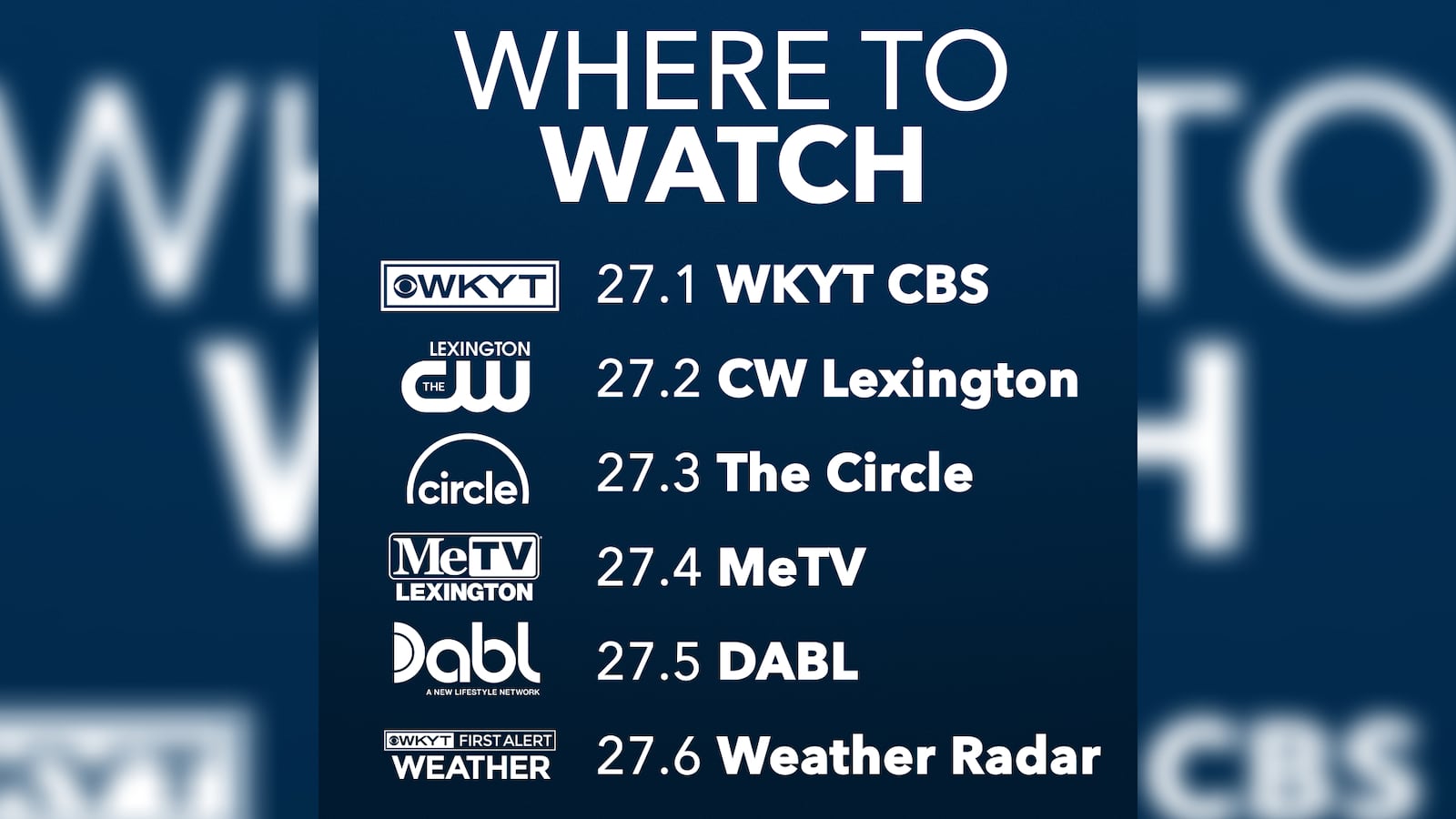Weather forecasting has come a long way, and WKYT Weather Doppler Radar stands at the forefront of accurate and reliable weather updates. Whether you're planning your day or preparing for severe weather conditions, understanding how doppler radar works can significantly enhance your preparedness. This technology is not just a tool but a lifeline in modern meteorology.
As one of the most advanced weather monitoring systems, WKYT Weather Doppler Radar provides real-time data that can help individuals and communities stay safe. The precision and accuracy of this system make it an indispensable resource for anyone who relies on timely weather information. In this article, we will delve into the intricacies of doppler radar and its role in modern weather forecasting.
This guide aims to provide you with a comprehensive understanding of how doppler radar works, its applications, and why WKYT Weather Doppler Radar is a trusted name in the field. By the end of this article, you will have a clearer picture of how this technology impacts daily life and contributes to weather safety.
Read also:Comprehensive Guide To Membersfideliscareorgpcp Everything You Need To Know
Table of Contents
- What is Doppler Radar?
- How Doppler Radar Works
- Importance of Doppler Radar in Weather Forecasting
- WKYT Doppler Radar Overview
- Benefits of Using Doppler Radar
- Limitations and Challenges of Doppler Radar
- Advanced Features of Doppler Radar
- Applications of Doppler Radar in Daily Life
- Future of Doppler Radar Technology
- Conclusion and Call to Action
What is Doppler Radar?
Doppler radar is a specialized form of radar technology used primarily in meteorology to detect atmospheric motion. It works by emitting radio waves that bounce off particles in the atmosphere, such as raindrops, snowflakes, and even insects. The returning signals provide valuable information about the speed and direction of these particles, enabling meteorologists to predict weather patterns with greater accuracy.
This technology is named after Christian Doppler, an Austrian physicist who discovered the "Doppler Effect," which describes how the frequency of waves changes relative to the motion of the source and observer. In the context of weather forecasting, this principle allows doppler radar to measure the velocity of moving objects, making it an essential tool for tracking storms and other weather phenomena.
History of Doppler Radar
The development of doppler radar began in the mid-20th century, with the first operational doppler weather radar installed in the United States in the 1950s. Since then, the technology has evolved significantly, incorporating digital processing and advanced algorithms to enhance its capabilities. Today, doppler radar is an integral part of weather forecasting systems worldwide.
How Doppler Radar Works
Doppler radar operates on the principle of emitting radio waves that travel through the atmosphere and reflect off objects. When these waves encounter moving particles, such as precipitation or wind-blown debris, they return to the radar antenna with a shift in frequency. This shift, known as the Doppler Effect, provides critical information about the motion of the particles.
Key Components of Doppler Radar:
- Transmitter: Generates radio waves that are sent into the atmosphere.
- Antenna: Captures the reflected signals and sends them to the receiver for analysis.
- Processor: Analyzes the data to determine the speed, direction, and intensity of weather phenomena.
Types of Doppler Radar
There are several types of doppler radar systems, each designed for specific applications:
Read also:P2c Pueblo Police Department Enhancing Community Safety Through Cuttingedge Technology
- C-band Doppler Radar: Used for long-range weather monitoring.
- X-band Doppler Radar: Ideal for detecting smaller-scale weather events.
- S-band Doppler Radar: Offers high-resolution imaging for severe weather conditions.
Importance of Doppler Radar in Weather Forecasting
Doppler radar plays a crucial role in modern weather forecasting by providing real-time data that enhances the accuracy of predictions. Its ability to detect the movement of precipitation and atmospheric particles allows meteorologists to track storms, hurricanes, and tornadoes with unprecedented precision.
According to the National Oceanic and Atmospheric Administration (NOAA), doppler radar has significantly reduced the number of weather-related fatalities by enabling early warnings and timely evacuations. This technology is especially vital in regions prone to severe weather, where rapid decision-making can save lives and protect property.
Advantages of Doppler Radar
- Provides real-time updates on weather conditions.
- Tracks the movement and intensity of storms with high accuracy.
- Enhances the ability to issue early warnings for severe weather events.
WKYT Doppler Radar Overview
WKYT Doppler Radar is a state-of-the-art weather monitoring system serving Central Kentucky and surrounding areas. This system is part of the WKYT Weather Authority, a trusted source for accurate and reliable weather information. With its advanced capabilities, WKYT Doppler Radar provides detailed insights into local weather patterns, helping residents stay informed and prepared.
The WKYT Doppler Radar network includes multiple radar stations strategically positioned to cover a wide geographic area. This ensures comprehensive coverage and minimizes blind spots, providing a more complete picture of weather conditions across the region.
Key Features of WKYT Doppler Radar
- High-resolution imaging for precise weather tracking.
- Real-time updates delivered directly to viewers through WKYT's digital platforms.
- Integration with other meteorological tools for enhanced forecasting accuracy.
Benefits of Using Doppler Radar
The benefits of using doppler radar extend beyond weather forecasting, impacting various aspects of daily life. From aviation to agriculture, this technology provides valuable information that supports decision-making and improves safety.
In aviation, doppler radar helps pilots navigate safely by identifying areas of turbulence and severe weather. For farmers, it aids in planning planting and harvesting activities by providing accurate weather predictions. Additionally, doppler radar contributes to disaster preparedness by enabling early warnings for floods, hurricanes, and other natural calamities.
Impact on Daily Life
By integrating doppler radar data into daily routines, individuals and businesses can better anticipate weather-related challenges. This proactive approach not only enhances safety but also optimizes resource utilization and reduces costs associated with unexpected weather events.
Limitations and Challenges of Doppler Radar
Despite its many advantages, doppler radar is not without limitations. One of the primary challenges is the occurrence of "blind spots" in areas where radar coverage is weak or obstructed by geographical features. Additionally, interpreting doppler radar data requires specialized knowledge, which can be a barrier for non-experts.
Another limitation is the potential for false alarms, where radar signals indicate severe weather that does not materialize. This can lead to unnecessary panic and diminish public trust in weather forecasts. Researchers and meteorologists are continually working to address these challenges by improving radar technology and refining data analysis techniques.
Solutions to Limitations
- Deploying additional radar stations to enhance coverage.
- Developing more sophisticated algorithms for data interpretation.
- Providing training and education to improve public understanding of doppler radar data.
Advanced Features of Doppler Radar
Modern doppler radar systems incorporate advanced features that enhance their capabilities and expand their applications. Dual-polarization technology, for example, allows radar to differentiate between types of precipitation, improving the accuracy of weather predictions. Additionally, 3D imaging provides a more comprehensive view of atmospheric conditions, enabling meteorologists to analyze weather patterns from multiple angles.
These advancements have revolutionized weather forecasting, making it more precise and reliable than ever before. As technology continues to evolve, doppler radar will undoubtedly play an even more critical role in shaping our understanding of the atmosphere.
Emerging Technologies
- Artificial intelligence and machine learning for data analysis.
- Integration with satellite data for global weather monitoring.
- Development of portable doppler radar systems for field use.
Applications of Doppler Radar in Daily Life
The applications of doppler radar extend far beyond weather forecasting, impacting various sectors of society. In transportation, it helps optimize traffic flow by predicting weather-related delays. In sports, it assists in scheduling outdoor events and ensuring player safety. Even in urban planning, doppler radar data is used to design infrastructure that can withstand extreme weather conditions.
By leveraging doppler radar technology, communities can better prepare for and respond to weather-related challenges, improving overall quality of life. This versatility underscores the importance of investing in and advancing doppler radar systems for the benefit of future generations.
Case Studies
Several case studies highlight the effectiveness of doppler radar in real-world scenarios. For instance, during Hurricane Katrina, doppler radar played a crucial role in tracking the storm's path and intensity, enabling timely evacuations that saved countless lives. Similarly, in agriculture, doppler radar has been instrumental in optimizing crop yields by providing farmers with accurate weather predictions.
Future of Doppler Radar Technology
The future of doppler radar technology looks promising, with ongoing advancements promising to enhance its capabilities further. Researchers are exploring the use of quantum radar, which could provide unprecedented levels of accuracy and resolution. Additionally, the integration of doppler radar with other emerging technologies, such as artificial intelligence and big data analytics, holds the potential to revolutionize weather forecasting and beyond.
As the demand for accurate and reliable weather information continues to grow, the development of doppler radar technology will remain a priority for scientists and engineers worldwide. By pushing the boundaries of what is possible, we can ensure that doppler radar remains a vital tool for safeguarding lives and property in the face of an ever-changing climate.
Conclusion and Call to Action
In conclusion, WKYT Weather Doppler Radar represents the cutting edge of modern weather forecasting technology. Its ability to provide real-time, accurate data has transformed the way we understand and respond to weather conditions. By staying informed about doppler radar and its applications, we can better prepare for and mitigate the impacts of severe weather events.
We invite you to engage with this article by sharing your thoughts and experiences in the comments section below. Additionally, explore other resources on our website to deepen your understanding of weather science and its importance in our daily lives. Together, we can harness the power of technology to create a safer and more resilient future.


/do0bihdskp9dy.cloudfront.net/08-03-2021/t_0277acbb340e44119d5cac769ade49ee_name_file_1280x720_2000_v3_1_.jpg)